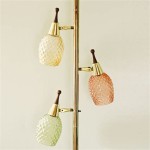Ceiling Fans for High Ceilings: Optimizing Air Circulation and Aesthetics
High ceilings can create a sense of grandeur and spaciousness in a room. However, they also present a challenge when it comes to air circulation. The air in high-ceilinged rooms tends to stratify, with cooler air settling near the floor and warmer air accumulating near the ceiling. This can lead to discomfort for those occupying the room, particularly in warm weather.
Ceiling fans are an effective solution to this problem. By circulating the air, ceiling fans help to distribute both cool and warm air evenly throughout the room, creating a more comfortable and inviting environment. But when it comes to ceiling fans for high ceilings, there are a few essential aspects to consider to ensure optimal performance and aesthetics.
Fan Size and Blade Length
The size of your ceiling fan should be proportional to the size of your room and the height of your ceilings. For high ceilings, you will need a larger fan with longer blades to effectively circulate the air. A fan with a blade span of 52 inches or more is recommended for rooms with ceilings that are 12 feet or higher.
Downrod Length
The downrod is the pipe that connects the ceiling fan to the ceiling. The length of the downrod will determine how far the fan hangs below the ceiling. For high ceilings, a longer downrod is required to ensure that the fan is positioned at the optimal height for air circulation. A downrod length of 36 inches or more is recommended for ceilings that are 12 feet or higher.
Ceiling Fan Direction
The direction of your ceiling fan should be adjusted seasonally to maximize its efficiency. In the summer months, you should set your fan to rotate counterclockwise. This will create a downdraft of air that will help to cool the room. In the winter months, you should set your fan to rotate clockwise. This will create an updraft of air that will help to circulate the warm air that has risen to the ceiling.
Light Kit
Many ceiling fans come equipped with a light kit. If you are considering adding a light kit to your ceiling fan, make sure to choose one that is designed specifically for high ceilings. Standard light kits may not provide adequate illumination for rooms with high ceilings.
Mounting
Installing a ceiling fan on a high ceiling can be a challenging task. It is important to ensure that the fan is properly secured to the ceiling to prevent it from falling and causing injury. If you are not comfortable installing the fan yourself, it is best to hire a qualified electrician.
Conclusion
Ceiling fans are an essential addition to any room with high ceilings. By circulating the air, ceiling fans help to create a more comfortable and inviting environment. When choosing a ceiling fan for a high ceiling, it is important to consider the fan size, blade length, downrod length, and ceiling fan direction. By following these tips, you can choose the perfect ceiling fan to optimize air circulation and enhance the aesthetics of your room.

Ceiling Fan Guide The Home Depot

Ceiling Fan Guide The Home Depot

How To Choose A Ceiling Fan For Vaulted Ceilings Lightology

Ceiling Fan Direction For Winter And Summer Fans

Why Change Your Ceiling Fan Direction In Summer Winter

Which Way Should Fan Spin In Summer Or Winter Hunter

What Is The Right Ceiling Fan Direction For Winter
Ceiling Fan Direction In Winter Vs Summer Taskrabbit Blog

Ceiling Fan Guide The Home Depot

Find The Best Ceiling Fan For Your Home Destination Lighting Flip Switch
Related Posts








